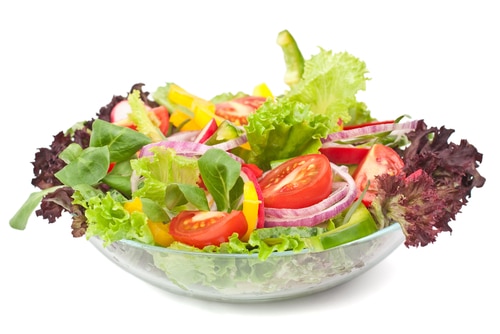
Think Out of the Package
Lighten up on processed and packaged foods that are high in sugar and low in fiber. Chips, cookies, brownies, cakes and candy bars are rich in sugary carbs, calories and have little nutritional value. In addition, most processed and packaged foods have had most of their vitamins and minerals removed along with their fiber, so they aren’t a healthy choice from a nutritional standpoint – or for controlling your weight. Many processed foods also contain unhealthy additives like preservatives, artificial flavors, food coloring, bleaching agents, and nitrites. Makes them sound a little less appetizing, doesn’t it? Cutting back on processed foods and replacing them with whole foods is one of the best things you can do for your health.
Find Healthier Ways to Satisfy Your Urge for Carby Foods
Find healthier substitutes for unhealthy carbs you typically eat. If you have a passion for potato chips, make kale chips at home for a healthy chip “fix.” Replace your sugary breakfast cereal from a box with old-fashioned oatmeal and sweeten it with fresh berries. Make nuts your “go to” snack when you yearn for something crunchy. When you’re tempted to splurge on a chocolate brownie, eat a square of dark chocolate or make a healthy chocolate smoothie with plain yogurt, raw cocoa powder and sweeten it with Stevia. Look for healthier substitutes for unhealthy carbs you’re currently eating.
Get More Good Carbs by Choosing Healthier Side Dishes
Replace starchy side dishes like white rice and white potatoes with vegetable sides. Choose vegetables in an array of colors to get an assortment of vitamins, mineral, and phytonutrients. Think green, leafy vegetables, broccoli, red peppers, carrots, and squash – and don’t forget the beans. Red beans and black beans are one of the best sources of cell-protective antioxidants. They’re also rich in protein and fiber, which helps to stabilize your blood sugar level and your appetite. If you can’t pass on potatoes, make mashed sweet potatoes or baked sweet potatoes your potato of choice.
Look for Whole Grain Substitutes
Make whole grain substitutions. Replace white rice with brown rice or enjoy another healthy grain like quinoa in its place. Quinoa has a slightly nutty flavor that makes it the perfect choice for your next pilaf. Plus, you’ll benefit from the additional fiber, protein, vitamins, and antioxidants this grain contains. Replace white bread with bread that lists whole wheat as the first ingredient. Ditch the noodles and processed pasta for whole grain pasta.
Skip the Soft Drinks and Fruit Juices
Would you believe a 12-ounce can of soft drink has almost 40 grams of sugar? That’s a surefire way to send your insulin levels into orbit. Choose a low-carb substitute like unsweetened tea or sparkling water flavored with a twist of lemon to sip on instead of a sugary soft drink. Skip the fruit juice, and munch on the whole fruit instead. The fiber will help to tame your insulin levels.
The Bottom Line?
You need carbs in your diet, but use these healthy carb tips to choose the right ones. Be carb smart with your food choices.
Related Articles By Cathe:
Good Carbs vs. Bad Carbs: Do You Know the Difference?
5 Myths About Carbs That It’s Time to Stop Believing
Are Whole Grains Good or Bad for Your Gut and for Your Health?
Why You Should Eat Your Carbs with Protein
Love Pasta but Cutting Back on Carbs? 6 Great Ways to Substitute Spaghetti Squash

